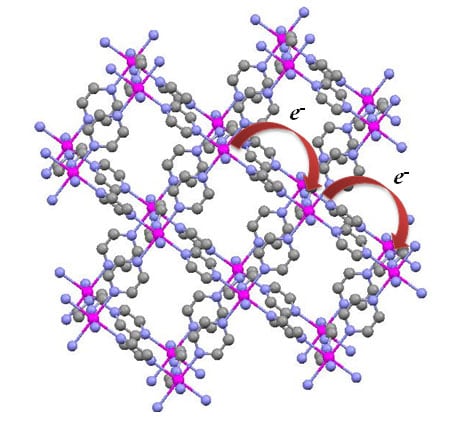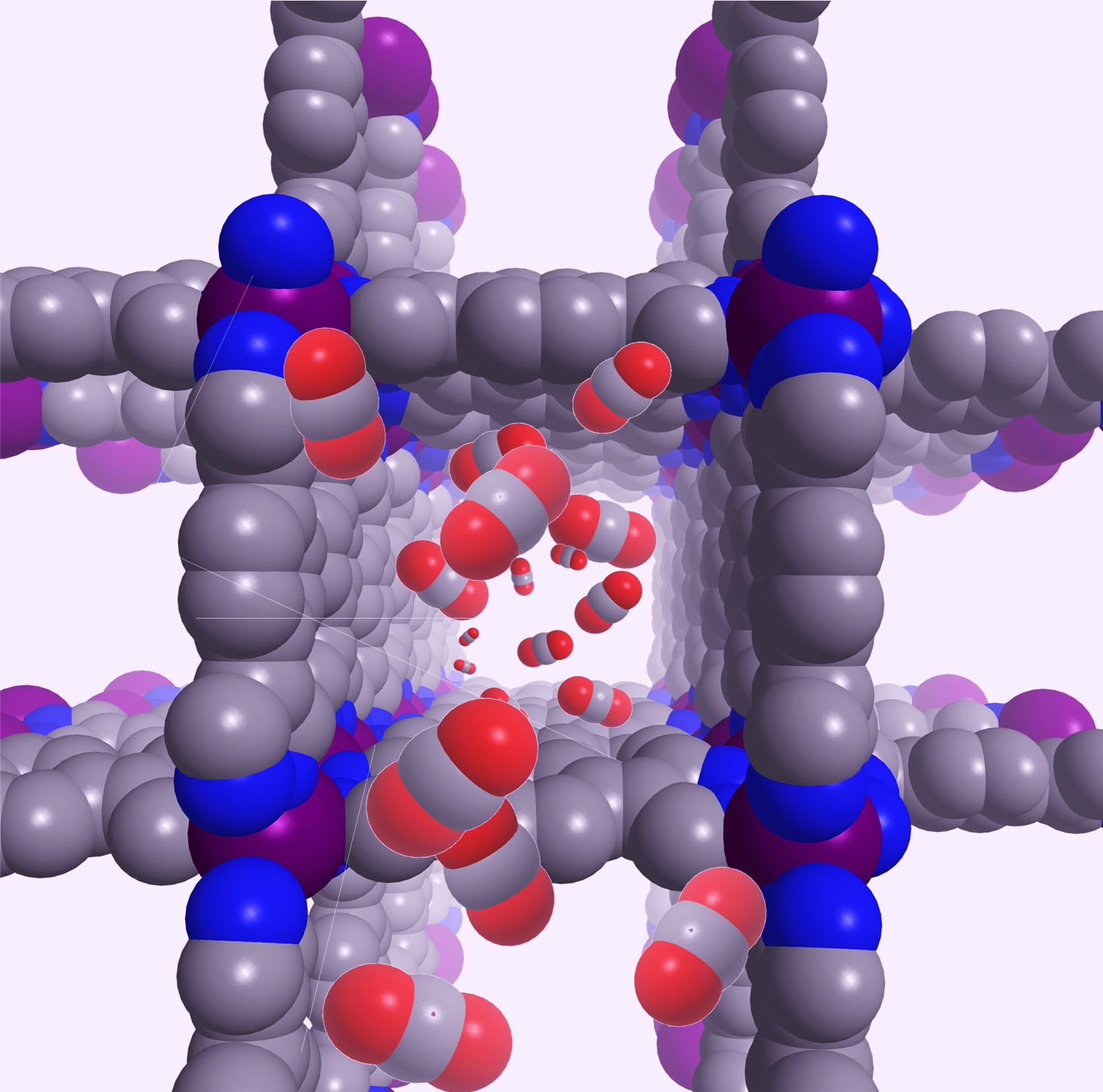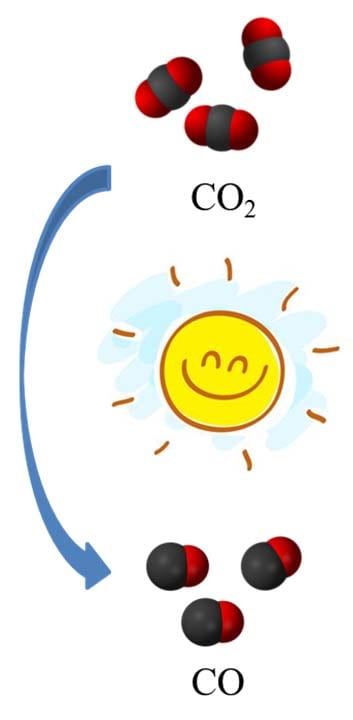Research Projects Available
(1) Redox-active and radical MOFs
 This project involves the design and synthesis of metal-organic frameworks which exhibit the highly sought-after properties of redox-activity and electronic conductivity. The new materials will be based on mixed-valence metal clusters of Mo, W, Ru, Os and redox-active bridging ligands. Solid-state electrochemical and spectroelectrochemical techniques will be developed to investigate the conductivity properties. The opportunities for advances at a fundamental and applied level are immense, with potential applications ranging from sensors to molecular electronics devices. This project is being supported through an Australian Research Council QEII grant.
This project involves the design and synthesis of metal-organic frameworks which exhibit the highly sought-after properties of redox-activity and electronic conductivity. The new materials will be based on mixed-valence metal clusters of Mo, W, Ru, Os and redox-active bridging ligands. Solid-state electrochemical and spectroelectrochemical techniques will be developed to investigate the conductivity properties. The opportunities for advances at a fundamental and applied level are immense, with potential applications ranging from sensors to molecular electronics devices. This project is being supported through an Australian Research Council QEII grant.
FOUR PROJECTS ARE AVAILABLE IN THIS AREA:
(1) The development of novel solid state spectroelectrochemical technqiues
(2) The development of electrochemical methods (DC and AC) to understand the fundamental aspects of electron transport in crystalline MOFs
(3) The development of ruthenium- and osmium-based Metal-Organic Frameworks
(4) Epitaxial growth of redox-active Metal-Organic Frameworks on conductive substrates as precursors to novel molecular electronics devices
Each sub-project requires students to develop a broad range of skills and techniques from the synthesis and structural characterisation of MOFs, to the detailed analysis of their optical and electrochemical properties.
(2) THE INTERPLAY BETWEEN ELECTRONIC AND MAGNETIC EFFECTS IN FRAMEWORK MATERIALS
This project will be supported under an Australian Research Council grant from 2012-2015 in collaboration with Prof. Cameron Kepert. This work seeks to examine the highly novel phenomena arising from the coexistence of electron delocalisation and unpaired spins in framework materials. This is an essentially unexplored area in the field of MOFs, which is enabled by the expertise of our group in probing electronic and optical phenomena in such materials, and the expertise of Prof. Cameron Kepert's group in spin crossover, magnetic interactions and thermal expansion in framework solids. More information will be available soon and please contact me for more information on this exciting project.
(3) CARBON DIOXIDE CAPTURE AND CONVERSION
 The development of more efficient processes for carbon dioxide capture is considered a key to the reduction of greenhouse gas emissions implicated in global warming. Highly porous three-dimensional solids known as metal-organic frameworks will be developed for use as capture materials and will be characterised using a barrage of techniques (X-ray and neutron diffraction, thermogravimetric analysis and gas sorption measurements). The ultimate goal is the development of industrially-viable materials which can be readily integrated into industrial processes. This work is part of a major Australian initiative which was supported by the Science and Industry Endowment Fund (see the SIEF website for further details).
The development of more efficient processes for carbon dioxide capture is considered a key to the reduction of greenhouse gas emissions implicated in global warming. Highly porous three-dimensional solids known as metal-organic frameworks will be developed for use as capture materials and will be characterised using a barrage of techniques (X-ray and neutron diffraction, thermogravimetric analysis and gas sorption measurements). The ultimate goal is the development of industrially-viable materials which can be readily integrated into industrial processes. This work is part of a major Australian initiative which was supported by the Science and Industry Endowment Fund (see the SIEF website for further details).
See our Review article for more information
Two additional PROJECTS ARE AVAILABLE IN THIS AREA:

(1) The development of electrocatalysts based on MOFs incorporating salophen and cyclen metalloligands; and

(2) The development of photocatalysts based on MOFs incorporating rhenium tricarbonyl chloride metalloligands:
(4) PHOTO-ACTIVE MOLECULAR SIEVES
Recently, methodologies for the postsynthetic covalent functionalisation of metal-organic frameworks have opened up fascinating prospects for building complexity into the pores. This project will involve the synthesis of materials as “photoswitchable molecular sieves” in which light can be used to modulate the size and polarity of the pores. The structural and physical properties of the materials will require the development of novel techniques to probe the light-activated gas permeation properties.
(5) MIXED VALENCY IN “EXCITED” MOLECULES
The complex interplay between electronic and magnetic interactions is ubiquitous in chemical and physical systems (e.g., solid-state superconductors, spintronics devices) and in metalloenzymes in nature. Experimental studies in which these phenomena coexist are extremely rare. This will be addressed by developing dinuclear mixed-valence complexes which incorporate a series of bridging ligands that can mediate strong ferromagnetic “double-exchange coupling” between metal ions with unpaired electrons. The findings will have significant implications for the experimental and theoretical understanding of systems which exhibit novel magnetic and electronic phenomena.
Research Facilities & Instrumentation
The School of Chemistry houses a suite of world-class instrumentation for structural and physical characterisation of Inorganic Materials. We collaborate closely with the group of Prof. Cameron Kepert and benefit from access to a well-established synthetic laboratory in addition to numerous shared access facilities. We have recently established our own inert atmosphere glove box which will be operational from late 2011 and will enable routine synthesis and electrochemical measurements of air sensitive compounds. See some photos from the laboratory of the Molecular Materials Group here.
We regularly access the state-of-the-art Vibrational Spectroscopy Facility and the Australian Centre for Microscopy and Microanalysis, both housed next-door to Chemistry in the Madsen Building.